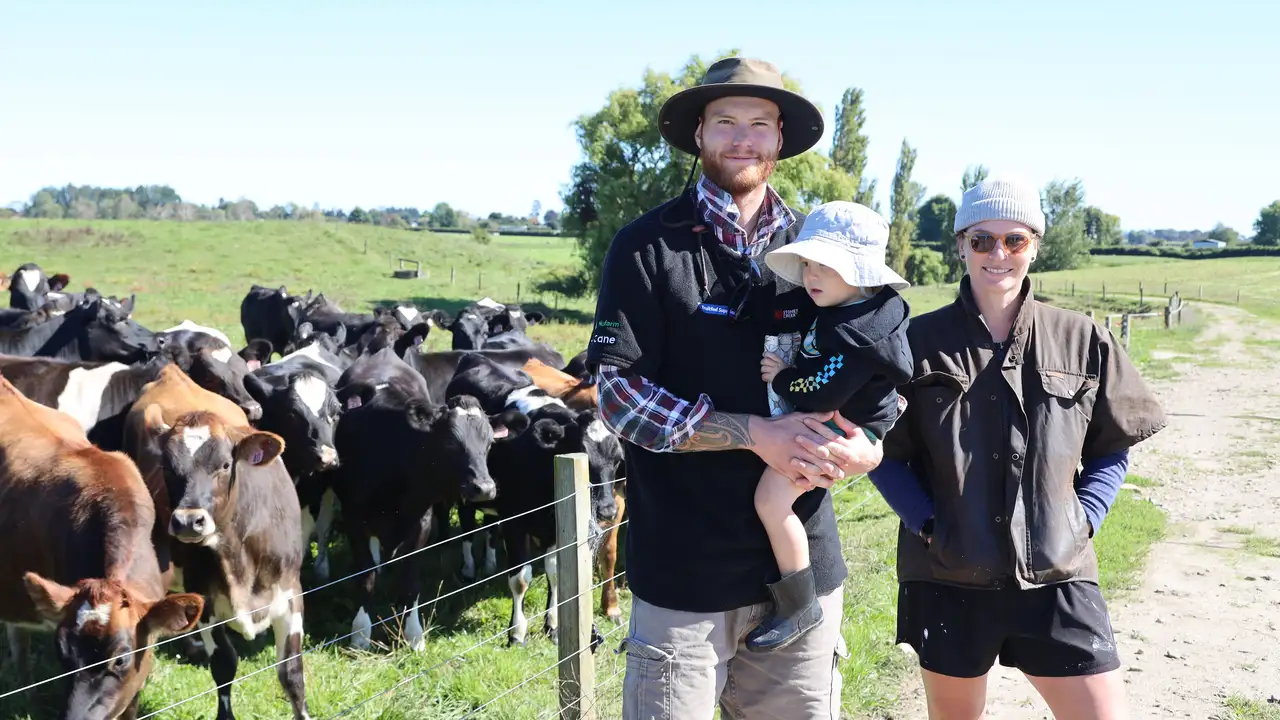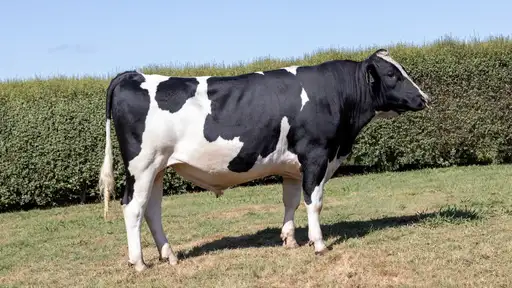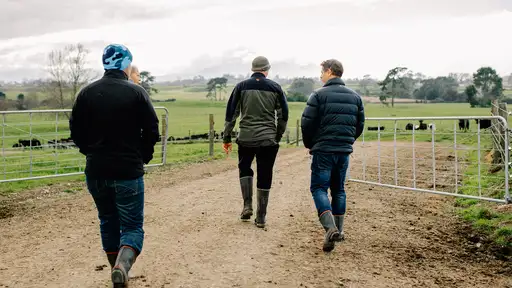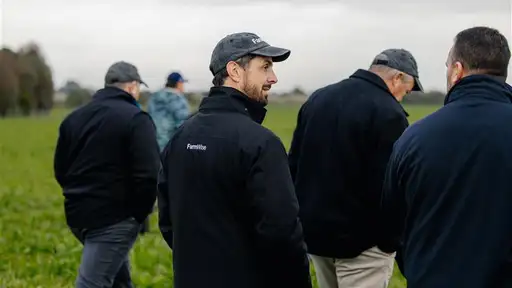Farm owner Malcolm Jones’ latest line of genetics, which consist of 134 rising one-year-old crossbred calves, are 25gBW points better than the previous year’s line of replacements, the rising two-year-olds.
That’s impressive, given the traditional dairy farm expectation of past decade dictates that replacement-calves average an annual 10gBW-point gain on the previous year.
It’s not like the farm is coming from a low base. Malcolm’s 550-cow crossbred herd is already punching well above its weight, with gBW and PW respectively in the top-8% and top-7% nationally.
Production during the past few years has topped more than 500kgMS per cow, up significantly from the 2019/2020 and 2020/2021 seasons.
How does Malcolm do it?
The farm steadfastly sticks to a few basic fundamentals of herd improvement:
- Malcolm mates his yearlings, and, along with his nephew and niece Fin Hoeata and Chloe Hoeata, the team regularly weighs young stock.
- Malcolm uses GeneMark® DNA Parentage Verification, backed by genomic evaluations, on all his dairy animals.
- The farm herd tests five times a year. Malcolm knows who his bottom performers are, and he knows who his top performers are.
- With the farm system consisting of year-round milking, collar technology enables artificial breeding to occur over a long period of time, mitigating staff fatigue.
- Before artificial breeding (AB) takes place Malcolm and Fin carefully select a team of bulls they want to use, utilising LIC’s Customate Plus program to find the optimal cow to mate with any given bull within the team. Genomically-selected bulls play a leading role, backed up by a number of hand-picked Daughter Proven bulls.
Malcolm and Fin scan LIC’s Genetics Catalogue each year, and Fin says doing the homework on what cows will go to what bulls is worth the interest and effort:
“Before start of mating we nominate the good cows we want to mate,” Fin says.

“We choose the traits we want, and a print-out is given to us about which bulls are best. We’re after udder traits… we want strong, well-shaped udders with good teat placement; we seek bulls that are down on somatic cell count; we’re also looking for rump width – because ease-of calving is important.”
Fertility, capacity, dairy conformation, and BW make up the mix, says Chloe.
Mating Yearlings:
The 183 ha (effective) dairy platform has the luxury of having a 45ha (effective) run-off just 10 minutes’ drive away.
“We do all-year-round milking,” Chloes says, “generally twice-a-day all year around, dropping from 550 cows at our peak down to 250 milking cows at one point. We dry off the stock individually, according to 56 days-to-calving.”
Because it’s a year-round milking system, mating is staggered and this enables AB to occur over a long period of time, with several young, quality, bulls reared on farm to take care of any slack (following the artificial breeding season).
The rising one-year-olds, who have been fed, weighed, and drenched on the main farm every eight weeks since birth, go up to the run-off in autumn, just after being mated.
“We’re very pleased with the way they’ve progressed,” Chloe says, “in the last eight weeks they’ve put on 50kgs.”
The youngest genetics trade places with the rising two-year-olds who return to the main farm for calving, mating, and finishing off before entering the main herd.
“The yearlings (R2s) get mated in August for one month,” Chloe says, with the replacement stock all having gone to LIC’s KiwiCross Forward Pack semen.
Breeding from the top; using beef at the bottom
Meanwhile, the Customate Plus program allows the pre-selected team of bulls to go to the best 80-90% of cows in the herd, and this happens between September and December.
“We’ll rank the lowest end of the cows based on BW, PW, LW, and somatic cells,” Fin says.
Fin and Malcolm combine that information with what they’ve seen in the shed: which cows have needed extra treatment; who has poor feet, and; any other relevant factors.
In terms of mating, these cows are deemed the bottom-end of the herd, and they therefore go to beef and short gestation length semen.
“The farm seeks at least 120 replacements a year from the 550 cows,” Chloe says.
“The goal is to be in the position of being able to select the best replacements and sell the surplus, although we’re keeping hold of all of those that have been raised on farm this year.”
The focus on raising the latest genetics is clearly evident: “A good start in life is hugely important,” Chloe says.
“And the benefits don’t just come from proper feeding, monitoring, and weighing – it pays off in terms of temperament, moving them, and familiarisation with staff.”





